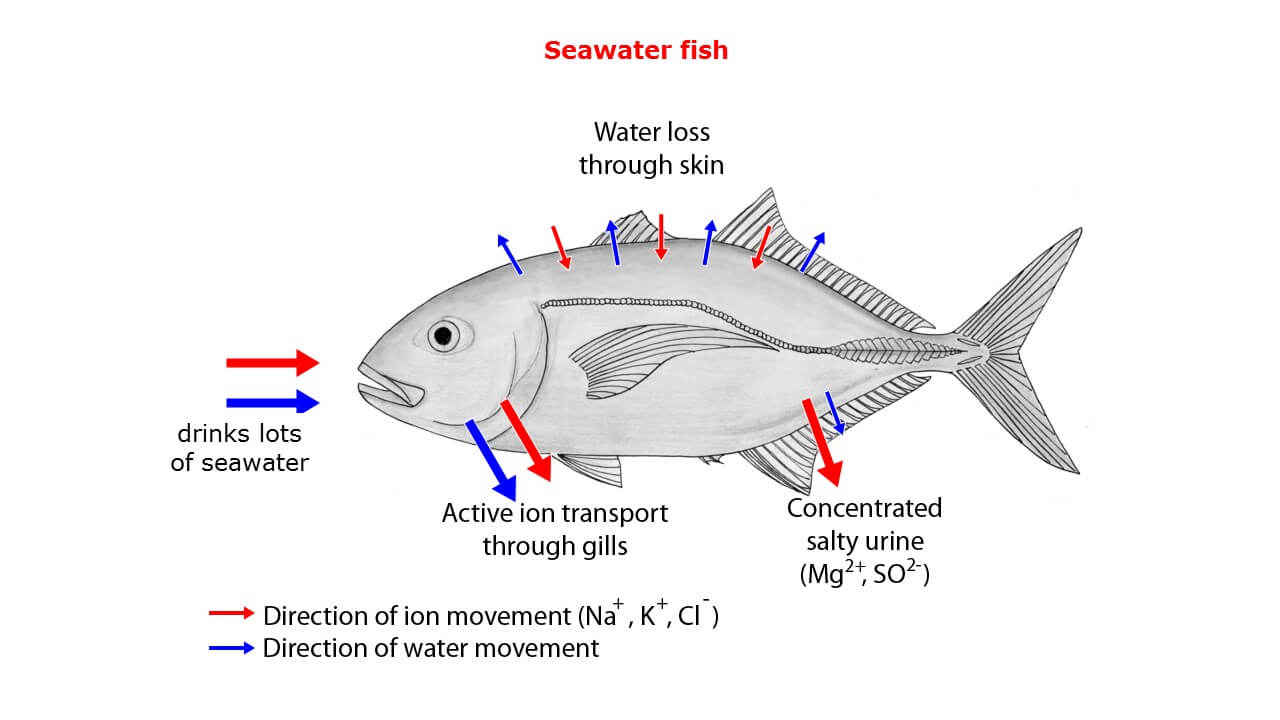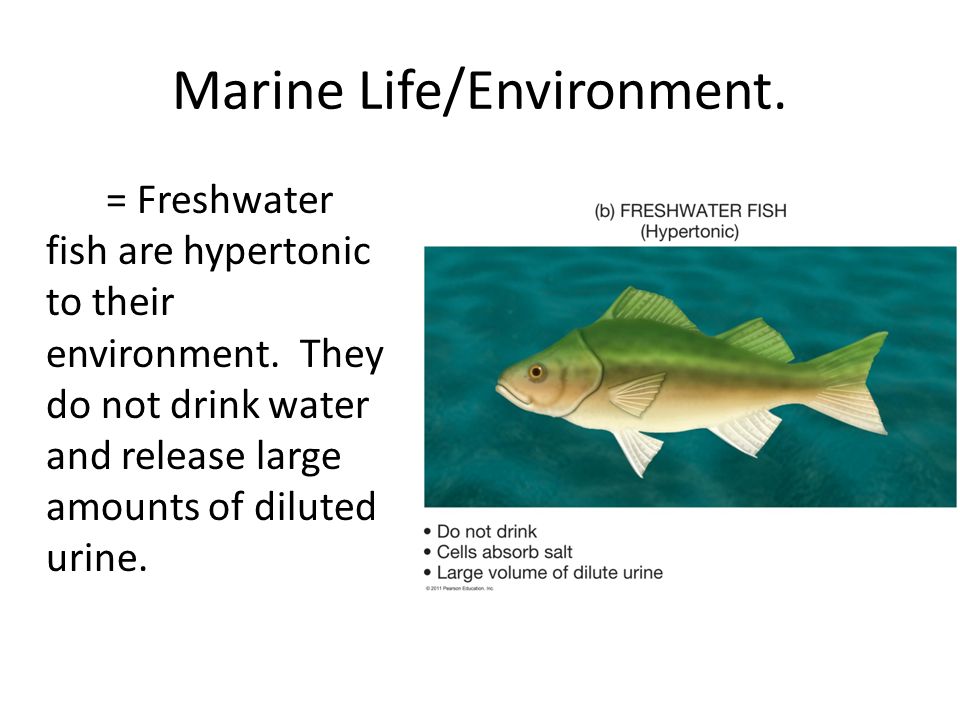Oceanic organisms live in a hypertonic environments.
If you’re looking for oceanic organisms live in a hypertonic environments pictures information linked to the oceanic organisms live in a hypertonic environments keyword, you have pay a visit to the ideal site. Our website frequently provides you with suggestions for seeking the highest quality video and picture content, please kindly surf and find more informative video articles and images that match your interests.
 Effects Of Different Salinities On The Osmoregulatory Capacity Of Mediterranean Sticklebacks Living In Freshwater Rind 2017 Journal Of Zoology Wiley Online Library From zslpublications.onlinelibrary.wiley.com
Effects Of Different Salinities On The Osmoregulatory Capacity Of Mediterranean Sticklebacks Living In Freshwater Rind 2017 Journal Of Zoology Wiley Online Library From zslpublications.onlinelibrary.wiley.com
A simple solution no pun intended that eg. Describe osmoregulators or osmoconformers and how these tools allow animals to adapt to different environments. Freshwater organisms must deal with the opposite problem of preventing excessive amounts of water from the potentially hypotonic freshwater environment entering their highly saline bodies. Question 19 Oceanic organisms live in aenvironment whereas river organisms live in a environment.
There are two ways in which aquatic organisms maintain their water balance.
Instead of being hydrated by water the solute-rich ocean water will draw water out of the body to balance the difference in osmolarity. Organisms suited to live in a hypertonic environment have to deal with loss of water to the environment that has a lower water concentration. There are two ways in which aquatic organisms maintain their water balance. If you put a freshwater turtle in seawater the hypertonic seawater will dehydrate the turtle. Isotonic hypertonic hypotonic hypotonic.
 Source: slidetodoc.com
Source: slidetodoc.com
SALMON and other so-called anadromous fish species spend portions of their lives in both fresh and saltwater. –epifauna live on the Blank of the sea floor. Instead of being hydrated by the water the solute-dense ocean water will pull water from the body to balance the difference in osmolarity. Crabs –benthos are most abundant in blank water. Sea turtles for example live in a much more hypertonic solution compared to freshwater turtles.
IC isotonic hypotonic hypertonic.
There are two ways in which aquatic organisms maintain their water balance. Some organisms internal salt levels mimic the external thus they are able to survive in a salty environment without water loss. Organisms living in seawater must have a means of preventing the loss of water from the body to the highly saline and potentially hypertonic environment. Organisms suited to live in a hypertonic environment have to deal with loss of water to the environment that has a lower water concentration.
 Source: blogionik.org
Source: blogionik.org
Organisms suited to live in a hypertonic environment have to deal with loss of water to the environment that has a lower water concentration. One way is to control internal osmolality within their cells independent of its environment. In addition these organisms are normally polyextremophiles being adapted to live in habitats where various physicochemical parameters reach extreme values. Crabs –benthos are most abundant in blank water.
 Source: slidetodoc.com
Source: slidetodoc.com
Describes organisms living on or in the ocean bottom. If you place a freshwater turtle in seawater the hypertonic seawater will dehydrate the turtle. The ocean is made of salt water and is a hypertonic solution compared to cells. Fish osmoregulate through their gills kidneys and intestines.
 Source: slidetodoc.com
Source: slidetodoc.com
Question 19 Oceanic organisms live in aenvironment whereas river organisms live in a environment. Identify and describe adaptations that help specific ocean organisms survive. This is called simple diffusion. Some have gills and renal.
Freshwater organisms must deal with the opposite problem of preventing excessive amounts of water from the potentially hypotonic freshwater environment entering their highly saline bodies. Sea turtles for example live in a much more hypertonic solution compared to freshwater turtles. Give it adaptations such as specialized body parts or abilities that help it live in the coral reef. Marine worms –nektobenthos swim or crawl through water blank the seafloor ex.
Sea stars anenomes –infauna live buried in blank ex.
Persons lost at sea without any fresh water to drink are at risk of severe dehydration because the human body cannot adapt to drinking seawater which is hypertonic in comparison to body fluids. For example many hot springs are acid or alkaline at the same time and usually rich in metal content. Some animals live in extremely hypertonic environments such as sea turtles. One way is to control internal osmolality within their cells independent of its environment. Create a model or a drawing of your organism.
 Source: slidetodoc.com
Source: slidetodoc.com
For example many hot springs are acid or alkaline at the same time and usually rich in metal content. Molecules of soluble substances such as nutrients move through water from areas of high concentration to areas of low concentration until the distribution of the substance is uniform. Sea turtles for example live in a much more hypertonic solution compared to freshwater turtles. Describes organisms living on or in the ocean bottom. IC isotonic hypotonic hypertonic.
Fish osmoregulate through their gills kidneys and intestines. Identify and describe adaptations that help specific ocean organisms survive. Water also diffuses away from areas of high free water concentration into areas of. Sea turtles for example live in a much more hypertonic solution compared to freshwater turtles.
Water also diffuses away from areas of high free water concentration into areas of.
Organisms suited to live in a hypertonic environment have to deal with loss of water to the environment that has a lower water concentration. Water also diffuses away from areas of high free water concentration into areas of. Instead of being hydrated by water the solute-rich ocean water will draw water out of the body to balance the difference in osmolarity. Saltwater fish employ is to intake lots of water but excrete the salt.
 Source: slidetodoc.com
Source: slidetodoc.com
Saltwater fish employ is to intake lots of water but excrete the salt. Biology questions and answers. Fish that live in salty marine waters absorb most of the water they take in and expend energy to excrete the excess salt through their kidneys and gills. Aquatic organisms that live in hypertonic or hypotonic environments have adaptations for dealing with water balance maintenance.
 Source: slidetodoc.com
Source: slidetodoc.com
Persons lost at sea without any fresh water to drink are at risk of severe dehydration because the human body cannot adapt to drinking seawater which is hypertonic in comparison to body fluids. The deep ocean is generally cold oligotrophic very low nutrient content and exposed to high pressure. Instead of being hydrated by the water the solute-dense ocean water will pull water from the body to balance the difference in osmolarity. Saltwater fish employ is to intake lots of water but excrete the salt.
 Source: slidetodoc.com
Source: slidetodoc.com
There are two ways in which aquatic organisms maintain their water balance. Sea turtles for example live in a much more hypertonic solution compared to freshwater turtles. This is called simple diffusion. Water also diffuses away from areas of high free water concentration into areas of.
Instead of being hydrated by the water the solute -dense ocean water will pull water from the body to balance the difference in osmolarity.
The fluid in the cells of a salt water fish is hypertonic to fresh water ie the concentration of water in the cells of the fish is less than the concentration in fresh water. Molecules of soluble substances such as nutrients move through water from areas of high concentration to areas of low concentration until the distribution of the substance is uniform. Hypertonic and Hypotonic Environments Salts and sugars in solution will diffuse away from areas of high concentration into the surrounding solution. A simple solution no pun intended that eg. Organisms suited to live in a hypertonic environment have to deal with loss of water to the environment that has a lower water concentration.
 Source: slidetodoc.com
Source: slidetodoc.com
Fish that live in both environments retain both mechanisms. –epifauna live on the Blank of the sea floor. Sea turtles for example live in a much more hypertonic solution compared to freshwater turtles. Organisms such as goldfish that can tolerate only a relatively. Identify symbiotic relationships in which both organisms benefit.
If you put a freshwater turtle in seawater the hypertonic seawater will dehydrate the turtle.
Instead of being hydrated by the water the solute -dense ocean water will pull water from the body to balance the difference in osmolarity. A simple solution no pun intended that eg. If you put a freshwater turtle in seawater the hypertonic seawater will dehydrate the turtle. The fluid in the cells of a salt water fish is hypertonic to fresh water ie the concentration of water in the cells of the fish is less than the concentration in fresh water.
 Source: slidetodoc.com
Source: slidetodoc.com
The deep ocean is generally cold oligotrophic very low nutrient content and exposed to high pressure. In addition these organisms are normally polyextremophiles being adapted to live in habitats where various physicochemical parameters reach extreme values. If you place a freshwater turtle in seawater the hypertonic seawater will dehydrate the turtle. The fluid in the cells of a salt water fish is hypertonic to fresh water ie the concentration of water in the cells of the fish is less than the concentration in fresh water.
 Source: slidetodoc.com
Source: slidetodoc.com
The rate of this diffusion depends on the concentration gradient across the membrane. In addition these organisms are normally polyextremophiles being adapted to live in habitats where various physicochemical parameters reach extreme values. One way is to control internal osmolality within their cells independent of its environment. Saltwater fish employ is to intake lots of water but excrete the salt.
 Source: slideplayer.com
Source: slideplayer.com
Hypertonic Question 20 Of what was the dialysis tubing used to monitor osmosis made. Instead of being hydrated by water the solute-rich ocean water will draw water out of the body to balance the difference in osmolarity. Create a model or a drawing of your organism. Persons lost at sea without any fresh water to drink are at risk of severe dehydration because the human body cannot adapt to drinking seawater which is hypertonic in comparison to body fluids.
Instead of being hydrated by the water the solute -dense ocean water will pull water from the body to balance the difference in osmolarity.
Fish that live in both environments retain both mechanisms. Organisms suited to live in a hypertonic environment have to deal with loss of water to the environment that has a lower water concentration. Isotonic hypertonic hypotonic hypotonic. Saltwater fish employ is to intake lots of water but excrete the salt. Organisms living in seawater must have a means of preventing the loss of water from the body to the highly saline and potentially hypertonic environment.
 Source: blogionik.org
Source: blogionik.org
IC isotonic hypotonic hypertonic. Sea turtles for example live in a much more hypertonic solution compared to freshwater turtles. Organisms living in seawater must have a means of preventing the loss of water from the body to the highly saline and potentially hypertonic environment. This is called simple diffusion. One way is to control internal osmolality within their cells independent of its environment.
Found only in benthic environments d hypertonic with respect to their environment e.
Freshwater fish excrete large amounts of water and retain most of the ions as well as urea. –epifauna live on the Blank of the sea floor. Describes organisms living on or in the ocean bottom. Question 19 Oceanic organisms live in aenvironment whereas river organisms live in a environment.
 Source: slidetodoc.com
Source: slidetodoc.com
Sea turtles for example live in a much more hypertonic solution compared to freshwater turtles. Fish that live in salty marine waters absorb most of the water they take in and expend energy to excrete the excess salt through their kidneys and gills. Attached to rock or moving on bottom ex. Organisms living in seawater must have a means of preventing the loss of water from the body to the highly saline and potentially hypertonic environment. Marine worms –nektobenthos swim or crawl through water blank the seafloor ex.
 Source: slidetodoc.com
Source: slidetodoc.com
Organisms suited to live in a hypertonic environment have to deal with loss of water to the environment that has a lower water concentration. Attached to rock or moving on bottom ex. There are two ways in which aquatic organisms maintain their water balance. Aquatic organisms that live in hypertonic or hypotonic environments have adaptations for dealing with water balance maintenance. The rate of this diffusion depends on the concentration gradient across the membrane.
 Source: researchgate.net
Source: researchgate.net
Attached to rock or moving on bottom ex. A simple solution no pun intended that eg. Biology questions and answers. IC isotonic hypotonic hypertonic. Hypertonic and Hypotonic Environments Salts and sugars in solution will diffuse away from areas of high concentration into the surrounding solution.
This site is an open community for users to share their favorite wallpapers on the internet, all images or pictures in this website are for personal wallpaper use only, it is stricly prohibited to use this wallpaper for commercial purposes, if you are the author and find this image is shared without your permission, please kindly raise a DMCA report to Us.
If you find this site convienient, please support us by sharing this posts to your own social media accounts like Facebook, Instagram and so on or you can also save this blog page with the title oceanic organisms live in a hypertonic environments by using Ctrl + D for devices a laptop with a Windows operating system or Command + D for laptops with an Apple operating system. If you use a smartphone, you can also use the drawer menu of the browser you are using. Whether it’s a Windows, Mac, iOS or Android operating system, you will still be able to bookmark this website.





